Importing an Electric Vehicle from Japan to New Zealand
The process of importing a vehicle from Japan to New Zealand
7/30/202312 min read
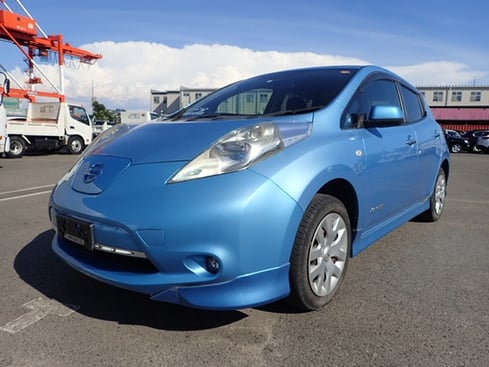

I thought I'd make use of the New Zealand Government's EV subsidy and purchase an electric vehicle. This blog post outlines the process of importing a vehicle from Japan, as well as giving some analysis and considerations, not to mention the total cost. All of what is written is just my humble opinion + first-hand experience. I am receiving no incentive or reward for what is written about each company below - except for the Wise money transfer affiliate link.
As of the 1st July 2023, the rebate for a used EV is $3507.00 including GST. This amount is credited to your bank account after the vehicle receives its compliance check (WOF) and registration (rego). Application for the rebate is completed here: https://transact.nzta.govt.nz/v2/apply-clean-car-rebate
The rebate has increased the cost of used EV's within the local market. Dealer pricing seems to be around $3,000 - $5,000 more expensive than private sales for budget EV's, which is why I took the plunge and decided to import an EV myself. That isn't to knock dealers in anyway, they ultimately assume all of the risk in the importation process, which needs to be compensated. On the other hand, importing yourself means you assume all the risk, but provided everything works out, you reap the rewards if everything goes smoothly.
With that in mind, I set myself a total budget (landed cost in NZ plus compliance (WOF/Reg) minus rebate). I added another $800NZD to my budget, for any unforeseen repairs required during the compliance process. For example brake pads and/or tyres may require replacing. An import compliance is more rigorous than a standard WOF, so it is reasonable to expect a few things will come up during this process. You can avoid issues by working closely with your auction representative in Japan, which is discussed further on.
I will preface this entire blog by saying I am really not fussy when it comes to vehicles. I am not phased on features or colour. I appreciate the journey just as much as the end state. I wanted a cheap about-town EV. Being in Queenstown also meant range wasn't a huge consideration. This might be much more of a consideration in a main centre like Christchurch, Wellington or Auckland.
My wish-list was basic:
Nissan Leaf
Minimum 8 bar / 80 - 100km range
Under 80,000km
Grade 4 and up
Ideally with side curtain airbags (many Leaf's only have driver and passenger airbags)
Pay a maximum of $5,000 with the rebate
First I chose an car auction exporter in Japan. I won't labour the point on the overall process (https://japan-motor.com/en/howtobuy), other than to say the exporter in Japan enters a bid on your behalf after translating the auction sheet for you. You get access to the auction houses via a dashboard, using a username and password. You work directly (i.e. via WhatsApp) with your Japan car auction agent, sending links to cars, getting feedback, and then using that feedback to inform the bid amount.
I chose Japan Motor for a few reasons. Their FOB (Freight on Board) fee is about 20,000 yen cheaper than other auction houses. They had New Zealand testimonials that were verifiable (i.e. actual people in NZ), you do not need to jump through any hoops to get access to the auction system and they use Wise money transfer (lower fees than PayPal). You can get a fees free transfer by using my referral link.
Creating an account with Japan Motor and accessing the auction dashboard is free. I highly recommend doing this first, and getting an understanding of the menus and interacting with the interface, as this is what you will ultimately use if you decide to bid.
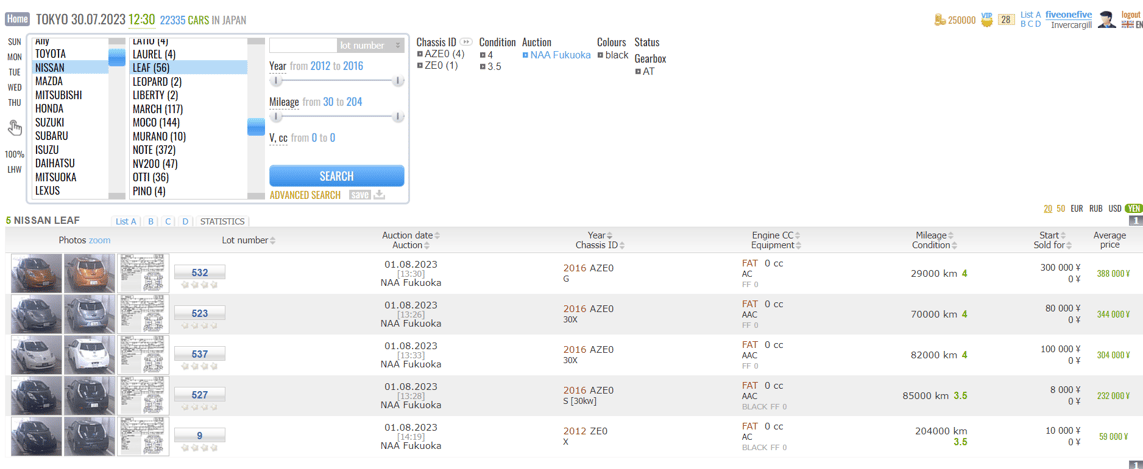

The above menu shows the car auction house dashboard. In the view above you can select grade, make, model, mileage, year and auction house location. Grade and auction house location are less obvious points than the others listed.
Grade is the condition of the vehicle. This is detailed here. The auction house is where the car is physically located in Japan. Certain auction houses have more robust grading than others. Parts of Japan (i.e. Northern Japan) are covered in snow during the year. The road gets salted in these areas, which means the chance of corrosion/rust is higher. You want to avoid any vehicle with rust or corrosion given the stringent compliance process.
Far flung auction yards also incur an additional inland transport fee (approximately 15,000 yen). Simply Googling the auction yard will give you an idea its location. Major ports are in Kobe, Yokohama, Nagoya, Tokyo and Saitama. The closer the car is to a port, the less likely there is going to be an inland transport fee. The car I went on to purchase was in NAA Fukuoka, which cost me an additional 15,000 yen to get the car to Kobe.
Notwithstanding, vehicles at far-flung auction houses can go for a bargain compared to those in main centers. Tokyo vehicles typically go for higher prices, for a number of factors - namely that vehicles can be inspected by auction house representatives in person prior to bidding (which pushes price up). Vehicles at far flung yards can also take a lot longer to ship (as I was to find out). So you have to keep things in balance. Price vs. condition vs. time to arrive. Your Japanese car auction agent will demystify these finer points for you if you ask.
You can get an idea of pricing differences by clicking on the lot number for a vehicle you are interested in, and selecting Sales Statistics. This is a key component to informing how much you should bid on a vehicle. You may which to bid on the low side for a few vehicles prior to scaling up. The best case being you get a cheap vehicle, worst case you do not buy the vehicle but gain an understanding of pricing.
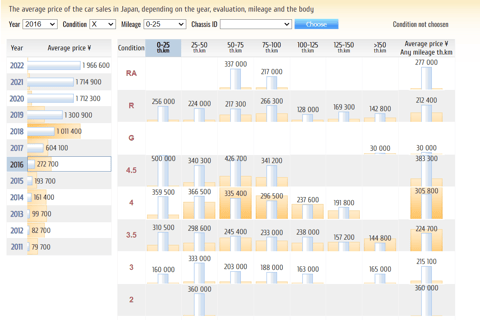



I was advised by Dan (my auction agent) from Japan Motor to stick to the NAA (Nissan) prefix yards if I wanted to buy a Nissan Leaf, on the basis they have strict grading conditions, this sentiment is also shared in various blogs on the internet. As I was to find out, this is somewhat false....
Dan was patient, answered all my questions carefully, and in reality worked incredibly hard for what amounted to a single car sale. Most auction agents work on behalf of car yards who are purchasing multiple vehicles at once, so they do not require the level of detail and coaching that I did.
Prior to bidding, Japan Motor requires you pay a deposit of 150,000YEN (1750NZD). This is to show you are committed to bidding, and is used to pay the deposit of the vehicle you purchase. The amount is fully refundable if you chose not to proceed.
I actually tested this claim during the process. I was not hugely confident in handing over 1750NZD to a Japanese bank account without any recourse if I wanted to cease purchasing a vehicle. However, in late-April 2023 I requested a refund, as the NZ government announced changes to the EV rebate scheme, which meant it made more sense to claim a rebate in July 2023 as opposed to in April.
I requested a refund via email, and within 12 hours the money was back in my Wise account, and I transferred it back into my New Zealand account without issue. There were no pushy sales tactics or back and forth. I asked for a refund and I got it.
June came around and I was ready to bid. The winter months have the benefit of not being stink-bug season. Stink-bug is an invasive species prevalent from approximately September - April (Link) Importing outside of stink-bug season will save approximately 225NZD in MPI NZ required fumigation fees.
I ended up purchasing a Nissan Leaf S Series (base model) with 69,000km / 9 bars of battery for 237,000 yen. It was slightly more expensive than I wanted to pay. This was relative to the km's, condition, series and battery health of others I had seen go for 200,000 yen - but still a good deal nonetheless. I misunderstood Dan during the bidding process also, the auction ended up being a tender, which added 30,000 yen to the total price. I bid 207,000 yen, so there was a residual amount to pay.
I purchased the vehicle on 27 June 2023 and paid the remaining bill that day (car price + FOB price + inland transport fee). So by this stage the amount I was required to "front" was:
Car Price - 237,000 YEN
FOB Price - 100,000 YEN
Inland Transport Fee - 15,00 YEN
My car was loaded onto Roll on Roll Off transport (for transport to New Zealand) on about the 15th August 2023. You need to settle the bill for freight about ten days from arrival into the destination port. On about the 2nd September 2023 I was required to pay NZ GST + RORO freight charge of $2757 NZD.
The shipping process was handled by Moana Blue. Bridget was my point of contact and was helpful, she explained there is a massive backlog of cars waiting to leave Japan, hence the delay. The car requiring internal road transport from NAA Fukuoka to Kobe also did not help. I was provided "yard" photos of the vehicle prior to it being loaded onto RORO transport.
This is where I found the claim of NAA yards having strict grading rather dubious. Namely the obvious surface rust on the outside of all four wheels not reflected in the auction sheet. Similarly, there was two small pieces of rust on the underbody of the vehicle - not enough to flag the vehicle, but concerning nonetheless, and I certainly would not have purchased the vehicle had I known it was present.
I put this to Dan along with the auction sheet vs. photos of the rust on wheels and he said he would complain to NAA Fukuoka. He agreed it was not up to the usually "strict" standard of the auction house.
The rest of the photos were great, and reflected what I expected of the vehicle vs. auction sheet. It appeared Moana Blue agents had done an underbody clean to comply with NZ's strict MAF conditions. Moana Blue provide the vessel name, so you can get a rough estimate of journey and ships position by Googling the vessel name and clicking on a few of the ships tracking links.
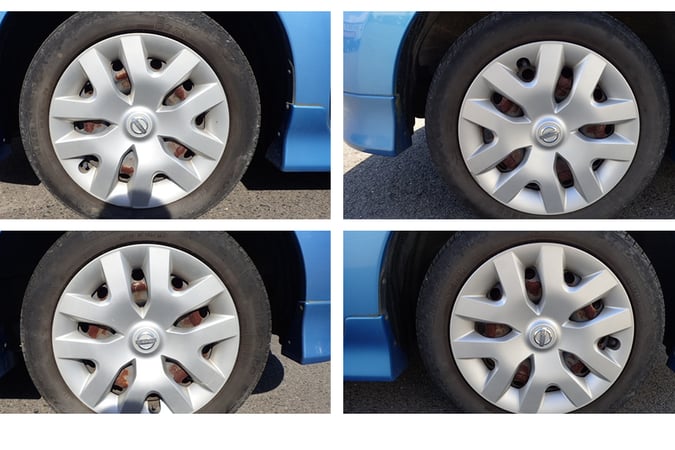

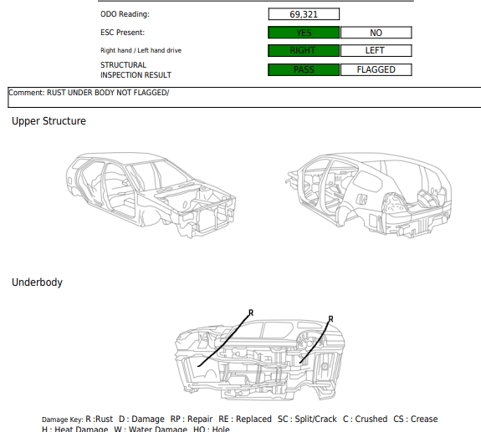


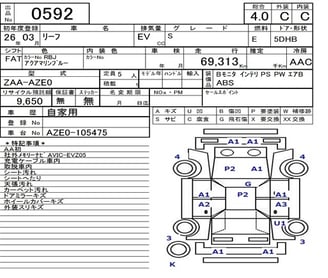
The images above show the actual vehicle vs. the auction sheet (bottom image). S and C are two letters you want to avoid. They stand for Rust and Corrosion. The numbers 1-3 dictate the severity of the damage, as it relates to the letter category. A stands for scratch. A1 is a very minor scratch. A more in-depth guide to damage can be found here: https://prestigemotorsport.com.au/auction-guide/
This is where the auction sheet ends up being at odds with itself. If the inspector goes to the effort of marking an A1 scratch on the body of the car, would they not then be obliged to mark the very obvious surface rust on the wheels?! Is "wheel cover scratches" actually "surface rust". Either way, I would not call it strict grading, creative grading perhaps?
The auction house wants to sell the vehicle on behalf of the customer, and mentioning rust is not really conducive to fetching the highest price.
I tried to find a .gif of sh*t rolling down-hill to really drive this point home, but all I could find was this hay-bail collecting some dude. I think it illustrates my point though. I am the person getting hit by the hay bail and NAA Fukukoka's auction grading is the bail itself.
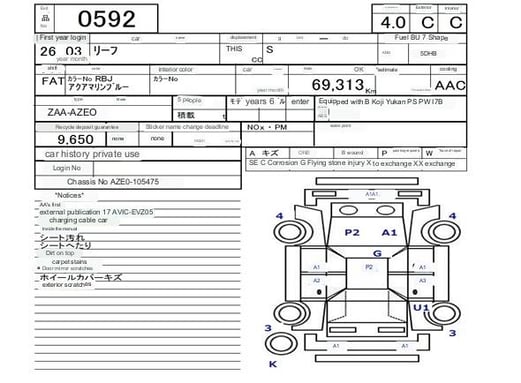

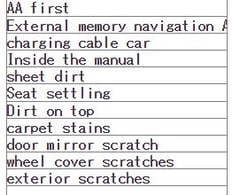

Vehicle information is displayed by clicking on individual auction sheets prior to bidding. Vehicle information is displayed alongside some incredibly low-quality images. For such a technologically advanced country it is baffling that Japanese auction houses refuse to move away from taking photographs on what appears to be a pre-historic web camera. The issue I faced (discussed further on) could have been eliminated if there were high-quality images of the vehicle.
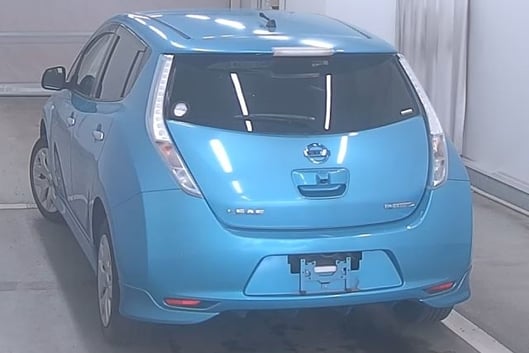

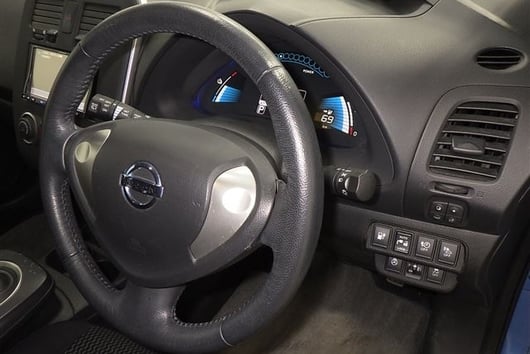

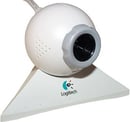


The other annoying thing is the auction sheet does not mention the SoH of the battery (no LeafSpy). It is also not uncommon for auction sheets to have no mention of battery-bars. You often have to count the number of bars on the poor-quality auction house images. Switching between image angles of the dash and using my chart below is an easier way of gauging battery condition - a bar that sits above the "fuel" logo is generally a 9 bar leaf. Your auction house representative may have access to additional images which show battery bars also.

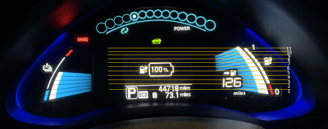


Oh well, too late now!
The car arrived into Lyttleton on Monday the 18th September 2023, it arrived at the compliance centre a few days later on Wednesday the 20th September 2023. The car passed it's initial compliance check without issue. The rust is cosmetic on the wheels and the chassis rust was not enough to create any issues. An audible sigh of relief. The compliance outfits are thorough. They strip the car back (take seats out etc.) - it takes about four hours.
Total cost for Compliance Check was $560.00 and 6 months registration + license plates was $238.00.
The EV charger that comes with early Nissan Leafs is unsuitable for NZ Power (it's only 200v). So I purchased the cheapest, but best looking one off AliExpress that I could afford. I landed on this one:
https://www.aliexpress.com/item/1005003651941213.htm
It came with an NZ Plug attached from the factory. It works fine, and charges my vehicle without getting hot. A final task is to get the charger PAT tested for my own piece of mind.
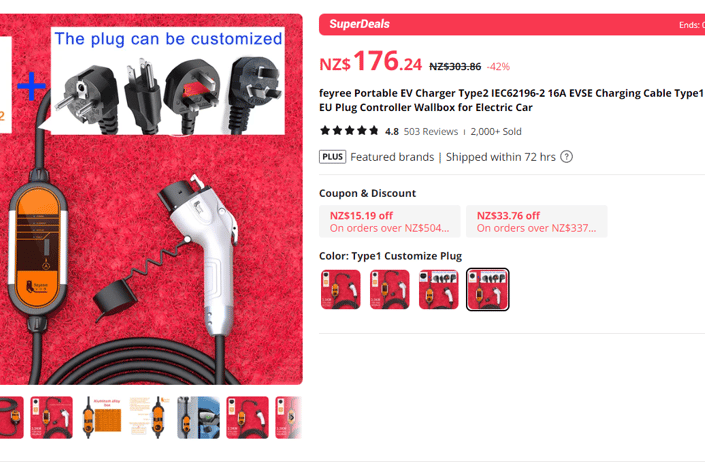

So, thus far my all up costs are:
Car + FOB + Inland Transport Fee:
$4126.60
NZ GST + Freight:
$2757.00
NZ Registration + Plate + Compliance:
$798.00
NZ Charger:
$200.00
Less NZ EV Rebate:
$3507
Total Landed and Road Ready Cost in NZ:
$4420.60
At this point I was thinking, I did not do to badly. I will admit it is a lot of risk take on, especially up until you get the rebate.
I was interested to see how my car performed with LeafSpy, given it is a better indication of battery life than just "bars". For a 9 bar Nissan Leaf I expected to see around 66.25% - 72.5% SOH based on these charts:
https://evdb.nz/v/nissan-leaf
I was somewhat surprised to see my LeafSpy result showing as 63% SOH. That puts me in the 8 bar range as opposed to 9 bar.


The vehicle also had a huge amount of quick-charges, 564 in fact! I was hoping to get a Nissan Leaf that was within the 9 bar band as described in the website, instead I got a 9 bar leaf in the 8 bar SOH banding.
Within 10 days of driving the vehicle has dropped to 8-bars. I find this odd. I have heard of people changing the dash display to show more favourable bar ratings, but I cannot be certain this has occurred in my instance. I guess if it drops another bar in a few weeks time I know that is the case.
I am only giving this information to illustrate the point that you can only find the bulk of this information after purchase. There is no way of knowing this prior to the cars arrival in New Zealand (unless you have an agent in Japan who can check for you?).
In conclusion, it has been a wild-ride. I think ultimately I got a good-deal given the price and condition of the vehicle. I think the biggest let-down was NAA Fukukoka's grading, which was supposed to be strict. Not having any information only than the battery bar status is also frustrating, particularly when the SOH is not what is reflected against the number of bars on the dash.
Have you found this blog useful?
